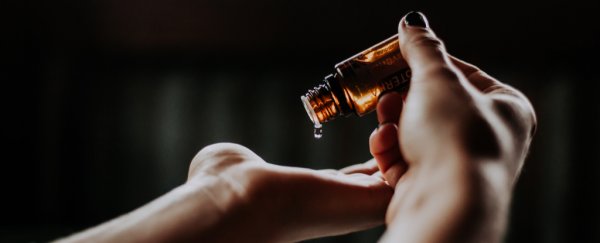Essential oils are a popular choice for people keen to remedy a wide variety of ailments, from minor infections to stress. But new data indicate that people are increasingly putting their health at risk when they turn to these fragrant, volatile plant extracts.
A new analysis from Australia, based on records from a poisons centre in the state of New South Wales, has revealed an increase in the number of essential oil poisonings in recent years, with more than half of calls to the centre regarding children.
University of Sydney researchers identified 4,412 cases of essential oil exposure dating between July 2014 and June 2018, and broke them down into times, type of oil, changes over time, and the characteristics of the affected individual.
They found that from 2014 to 2015, 1,011 calls were made to the centre by individuals or parents representing a potential poisoning. In 2017 to 2018, that number was up by more than 16 percent, to 1,177 cases.
Most of the poisonings – 80 percent – were purely accidental, mistaking the bottle for another pharmaceutical like a cough syrup. Only around 2 percent resulted from intentionally taking the essential oil based on misinformation.
Perhaps most concerning was that in 63 percent of cases, the person who was affected was under the age of 15.
"The onset of toxicity can be rapid, and small quantities (as little as 5 millilitres) can cause life-threatening toxicity in children," the researchers write in their report.
The overall numbers might not seem huge, especially when compared with cases involving other substances, including actual medications.
For example, a study released earlier this year based on data from the same centre found more than 95,000 hospital admissions were the result of paracetamol (acetaminophen) ingestion between 2007 and 2017 – a number that also revealed an alarming upward trend.
Behind both of these numbers is a context we need to keep in mind, one concerning the prevalence of each treatment, the way we market them, and the likelihood of their respective benefits.
Being essential doesn't make the oils important, so don't let the description fool you. The 'essence' refers to the volatility of the oils, which are removed by heating particular botanicals, often in a steam distillation process.
That means a fragrant plant, such as lavender, peppermint, or eucalyptus, has its aromatic compounds concentrated into a form which is then sold for use in oil burners and vaporisers.
They might smell nice, but recently essential oils have attracted increasing interest as a natural-seeming alternative to actual pharmaceuticals.
Pulling apart the hype and branding from the evidence is no simple task. Some oils, like witch hazel and thymol, do seem to have antiseptic or anti-parasitic qualities. And soothing scents, regardless of bioactivity, might help alleviate stress for psychological reasons.
Not all oils are of equal concern, either. Most commonly essential oils produce skin irritations or contact dermatitis. Others contain naturally occurring compounds known as endocrine disruptors, which have the potential to interfere with our hormones in unwanted ways.
But the researchers found just under half of the calls made to the centre were for eucalyptus essential oils. Taking just a few millilitres can result in stomach pains, nausea, and in some cases, even convulsions.
Deaths from essential oil poisoning are extremely rare, but have been recorded. A systematic review conducted in 2012 of 71 cases of adverse effects found a single confirmed case of an 80-year-old male dying from wintergreen poisoning.
As is often the case with natural remedies, it can be easy to oversell the benefits while downplaying the risks. Around the world, medicine regarded as alternative sits at a "crossroad" of regulation, seeking the benefit of science's stamp of approval without the sense of control and authority.
Knowing just how to categorise and regulate the use of essential oils as a medical treatment is therefore easier said than done.
The researchers have some places we could start.
"Flow restrictors and child-resistant closures would be desirable, but containers are only required to have such closures when the essential oil volume exceeds 15 millilitres," they write.
On an individual level, we can all start by simply seeing essential oils as potentially dangerous substances.
"Safe storage is important, and we recommend that essential oils be kept separate from oral medications to prevent therapeutic errors," the researchers advise.
This research was published in the Medical Journal of Australia.
